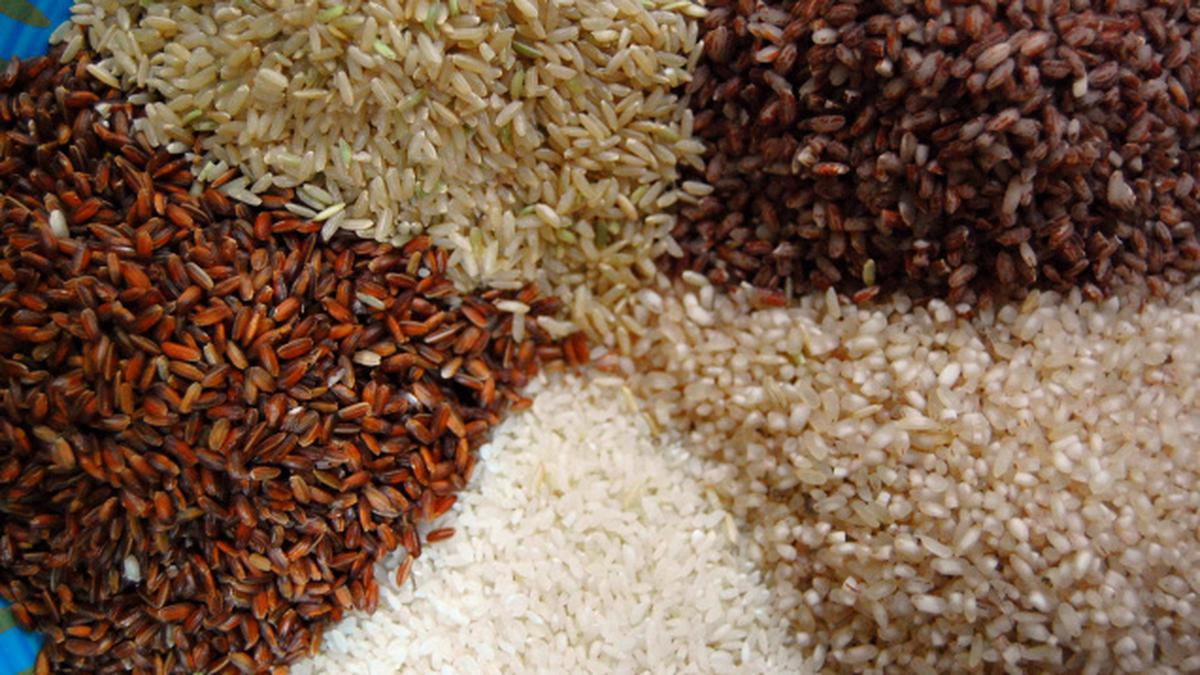- Courses
- GS Full Course 1 Year
- GS Full Course 2 Year
- GS Full Course 3 Year
- GS Full Course Till Selection
- Online Program
- GS Recorded Course
- NCERT (Recorded 500+ Hours)
- Polity Recorded Course
- Geography Recorded Course
- Economy Recorded Course
- AMAC Recorded Course
- Modern India, Post Independence & World History
- Environment Recoded Course
- Governance Recoded Course
- Science & Tech. Recoded Course
- International Relations and Internal Security Recorded Course
- Disaster Management Module Course
- Ethics Recoded Course
- Essay Recoded Course
- Current Affairs Recoded Course
- CSAT
- 5 LAYERED ARJUNA Mentorship
- Public Administration Optional
- ABOUT US
- OUR TOPPERS
- TEST SERIES
- FREE STUDY MATERIAL
- VIDEOS
- CONTACT US
Nitrogen-Use Efficiency (NUE) in Indian Rice Varieties
Nitrogen-Use Efficiency (NUE) in Indian Rice Varieties

In August, A recent study by biotechnologists at Guru Gobind Singh Indraprastha University (GGU), New Delhi, has revealed significant variation in Nitrogen Use Efficiency (NUE) among various popular rice varieties in India.
- This research could significantly impact agriculture by improving crop yields, reducing fertilizer reliance, and mitigating environmental damage.
Key Points:
- Research Findings:
- Variation in NUE: The study identified a five-fold difference in NUE among rice varieties. NUE measures how efficiently a crop uses nitrogen, affecting both yield and environmental impact.
- Economic Impact: Inefficient NUE results in the waste of nitrogen fertilizers, costing India approximately ₹1 trillion annually and over USD 170 billion globally. This inefficiency leads to increased fertilizer costs and environmental pollution.
- Environmental Concerns:
- Pollution: Nitrogen fertilizers contribute to the emission of nitrous oxide (a potent greenhouse gas) and ammonia, leading to air and water pollution. These pollutants have adverse effects on health, biodiversity, and climate change.
- India’s Emissions: India is the second-largest emitter of nitrous oxide globally, contributing 11% of global emissions from fertilizer use in 2020.
- Study Details:
- Publication: The findings were published in the Journal of Plant Growth Regulation.
- Methodology: The study analyzed 34 rice varieties over a decade, evaluating 46 parameters related to NUE. Researchers identified 19 key NUE-associated parameters, including eight previously unknown factors.
- Future Directions:
- Biotechnology: Emphasizes the need for biotechnological advancements to develop rice varieties with improved NUE.
- Field Testing: The research methodology has been validated in field trials, suggesting that large-scale screening of rice varieties could identify additional NUE-efficient cultivars.
- Recommendations:
- Enhanced Screening: Calls for comprehensive screening of Indian rice varieties to develop new cultivars that are both high-yielding and efficient in nitrogen use.
What is Nitrogen Use Efficiency (NUE) ?
Nitrogen Use Efficiency (NUE) refers to how effectively a plant converts applied or fixed nitrogen into biomass. It is the ratio between crop yield and the amount of nitrogen absorbed from the soil or through atmospheric fixation by bacteria.
Importance:
NUE is crucial for agricultural sustainability, especially in cereal crops like rice. Efficient nitrogen use can boost crop productivity while minimizing environmental impacts.
Concerns with Low NUE:
- Economic Impact:
- Inefficient NUE leads to substantial waste of nitrogen fertilizers, costing India around ₹1 lakh crore annually and over USD 170 billion globally.
- Environmental Impact:
- Nitrous Oxide: A significant source of nitrous oxide (N₂O), a powerful greenhouse gas, with India being the world’s second-largest emitter (11% of global emissions in 2020).
- Air Pollution: Nitrogen fertilizers contribute to nitrous oxide and ammonia emissions, affecting air quality and health.
- Water Pollution: Excess nitrogen causes nitrate/ammonium pollution in water bodies, impacting ecosystems and human health.
What is Nitrogen Pollution ?
Nitrogen pollution occurs when nitrogen compounds such as ammonia and nitrous oxide accumulate in the environment, posing health risks and causing ecological damage.
Historical Context:
Over the past 150 years, human activities have dramatically increased reactive nitrogen flows, leading to significant environmental harm.
Loss and Impact:
- Leaching: Approximately 200 million tonnes of reactive nitrogen (80%) is lost annually, leaching into soil and water bodies.
- Ecosystem Effects: Results in ecosystem over-enrichment, loss of biodiversity, and issues such as ozone depletion and climate change.
Effects of Nitrogen Pollution:
- Climate Change and Ozone Layer:
- Potency: Nitrous oxide is 300 times more potent as a greenhouse gas compared to methane and carbon dioxide.
- Ozone Layer: Nitrous oxide is a major human-made threat to the ozone layer.
- Biodiversity and Ecosystems:
- Soil Degradation: Excess nitrogen can acidify soils, degrade soil health, and reduce productivity.
- Ecosystem Disruption: Leads to dominance of nitrogen-tolerant species and creation of "dead zones" in oceans, severely impacting marine life.
- Air Quality:
- Smog Formation: Nitrogen oxides from industrial and vehicle emissions contribute to smog and ground-level ozone.
- Respiratory Health: Agricultural ammonia emissions, combined with other pollution sources, exacerbate respiratory diseases.
Biofortified Seed Varieties Developed by ICAR:
ICAR has recently launched biofortified seed varieties covering 61 crops, including cereals, millets, pulses, and various horticultural crops.
Examples:
- CR Dhan 416: A rice variety ideal for coastal saline areas, resistant to multiple diseases and pests.
- Durum Wheat Variety: Adapted for irrigated conditions, with high levels of zinc, iron, and protein. Suitable for Maharashtra, Karnataka, and Tamil Nadu.
What is Biofortification ?
Biofortification is the process of increasing the nutrient density of food crops through conventional breeding, improved agronomic practices, and modern biotechnology without sacrificing consumer-preferred traits.
Benefits:
- Nutrition: Addresses micronutrient deficiencies such as iron, zinc, and vitamin A.
- Disease Resilience: Biofortified crops are often more resilient to pests, diseases, and climate stresses.
- Sustainability: Biofortified seeds can be replicated and distributed without losing nutrient concentration.
- Cost-Effectiveness: Biofortification is cost-effective, offering significant economic benefits (e.g., every 1 Rupee spent results in 9 Rupees in benefits).
Need for Biofortification:
- Malnutrition: India has high levels of malnutrition, particularly iron, vitamin A, and iodine deficiencies. Biofortification can help reduce these deficiencies.
- Resilience and Sustainability: Biofortified crops provide high yields and resilience, contributing to sustainable agriculture.
- Socio-Cultural Acceptance: Biofortification delivers essential nutrients without altering food habits or cultural practices.
Conclusion:
The discovery of significant NUE variation among rice varieties offers a valuable opportunity for enhancing agricultural practices in India. By focusing on developing rice varieties with improved NUE, it is possible to boost crop productivity, reduce fertilizer costs, and address environmental concerns associated with nitrogen pollution.




